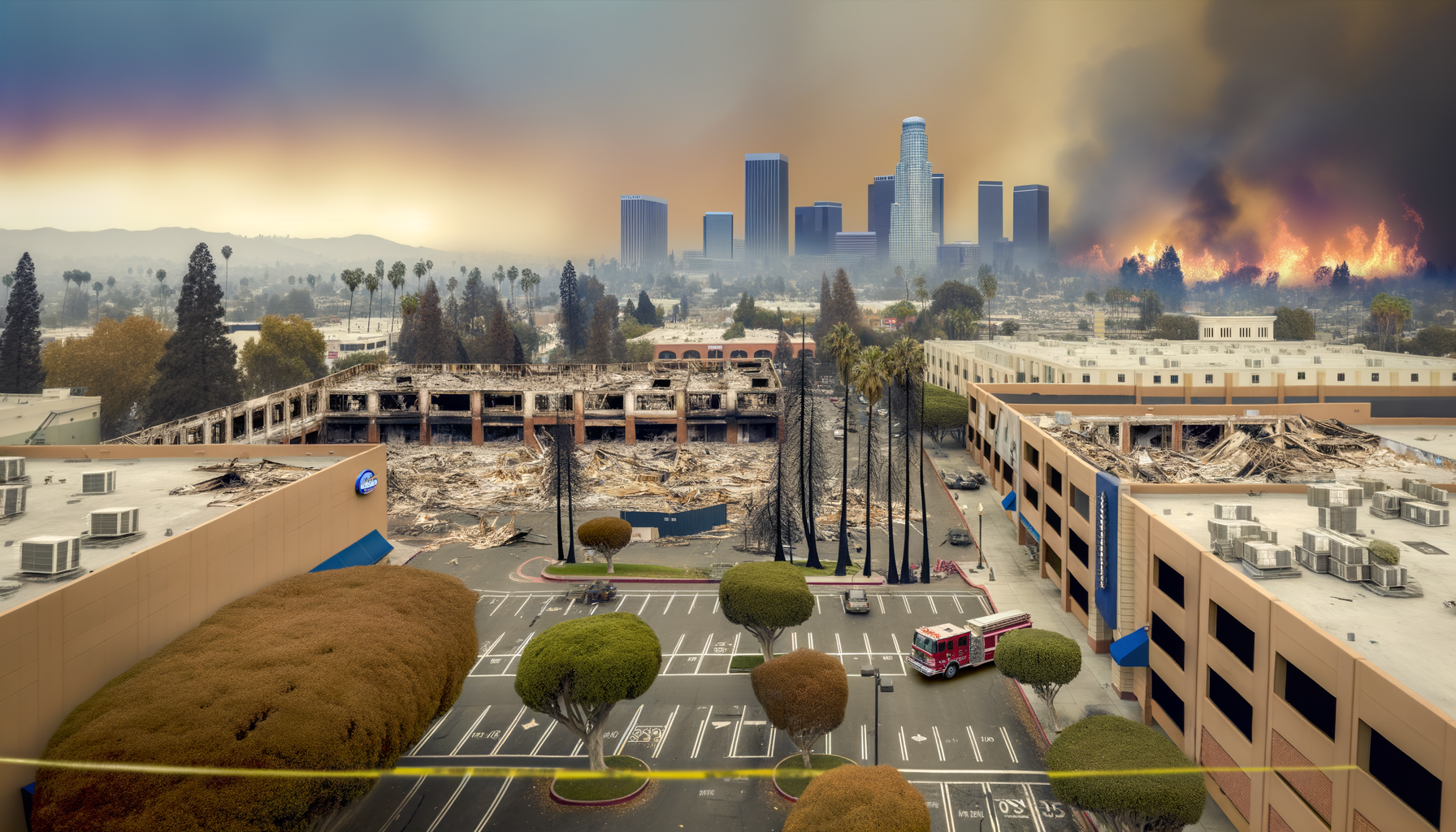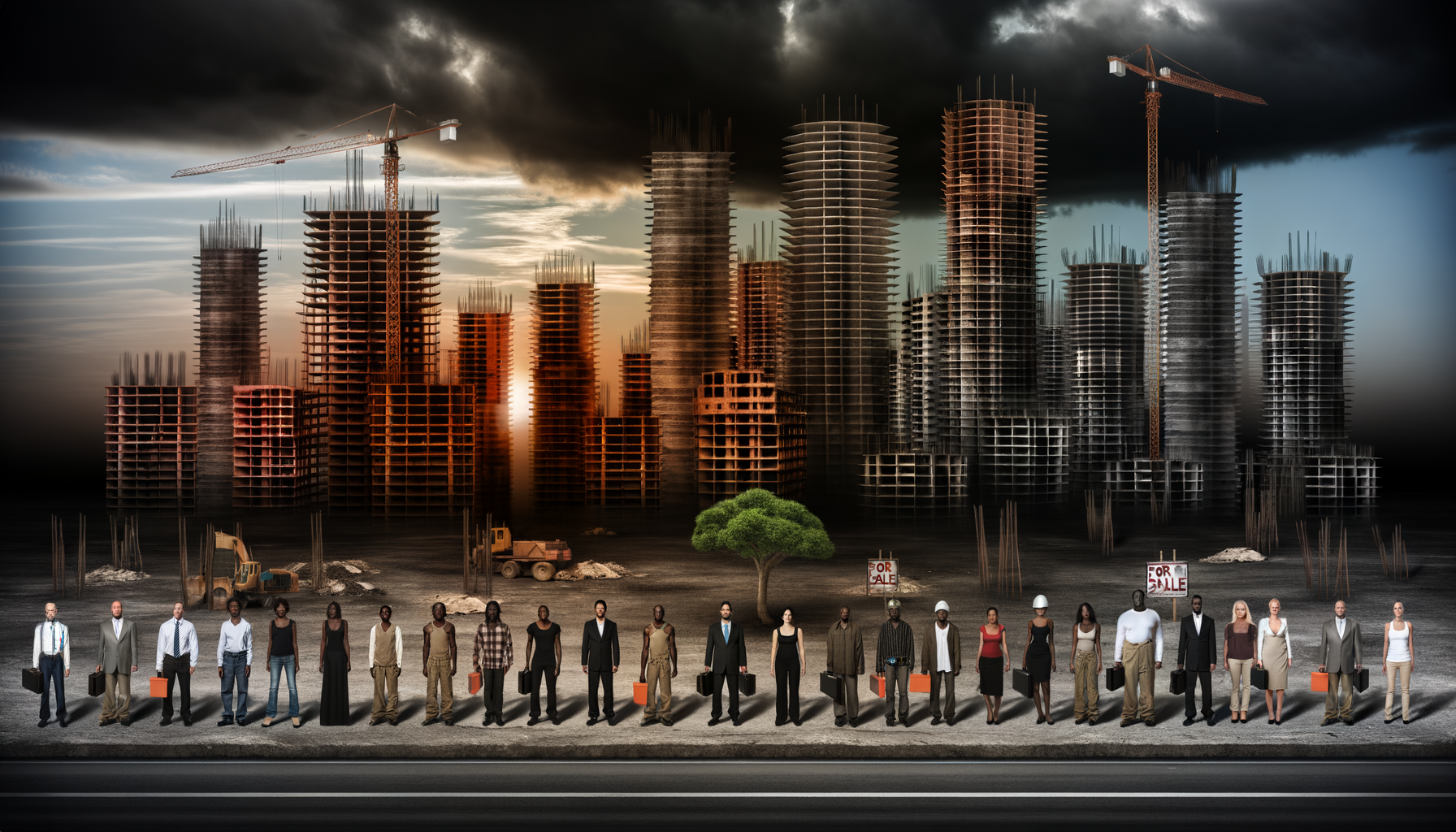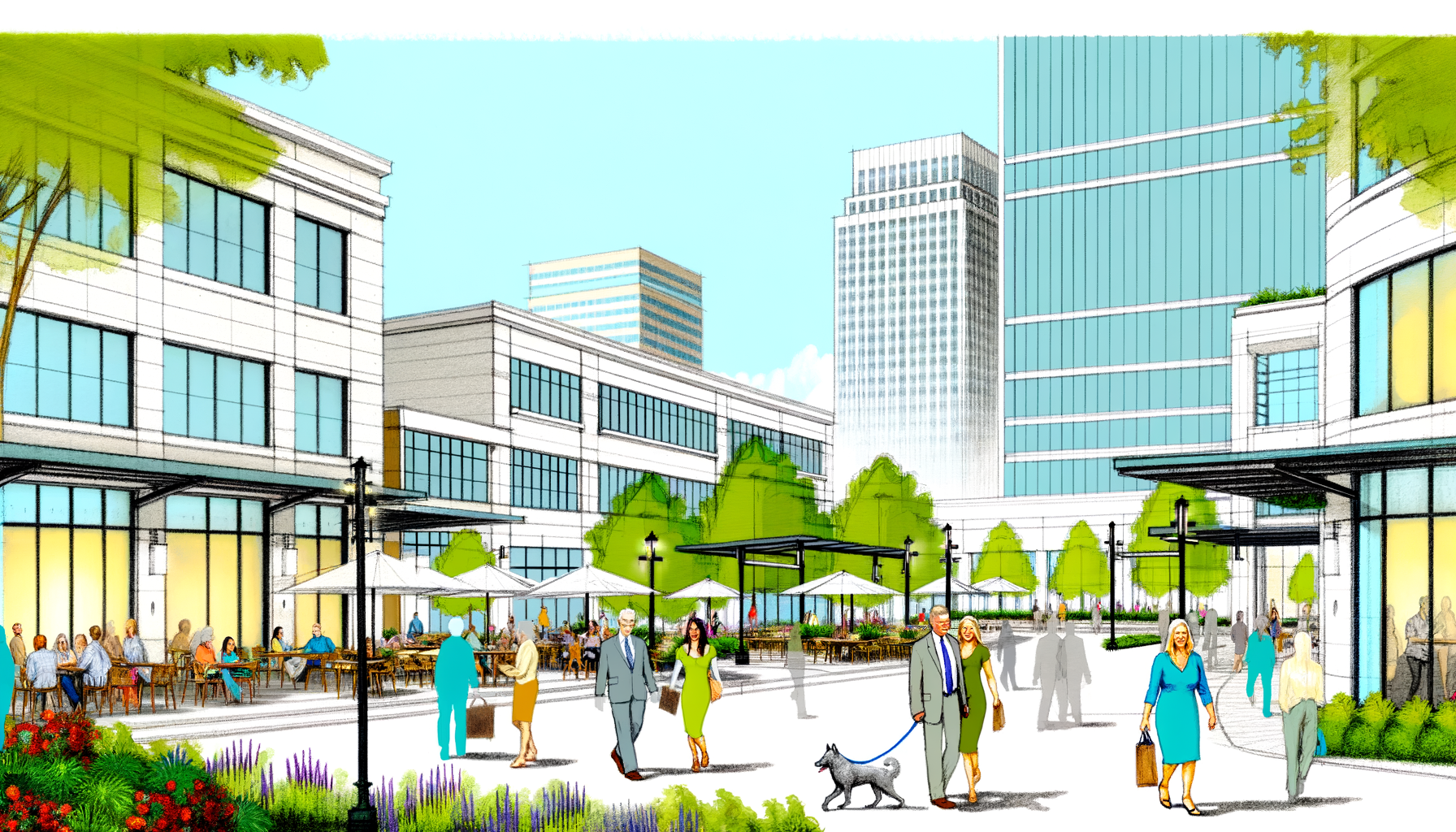Impact of LA Fires on 12 Million Square Feet of Commercial Real Estate
Los Angeles, famously known for its Hollywood glamour and coastal beauty, now faces an increasing threat from wildfires that have affected not just homes but also significant commercial real estate. With approximately 12 million square feet of office spaces, apartments, and retail properties situated within evacuation zones, the implications of these fires are profound and far-reaching.
The Vulnerability of Commercial Spaces
In recent years, the frequency and intensity of wildfires in California have escalated, prompting concern for urban planning and infrastructure. Within Los Angeles, many commercial properties lie in proximity to these high-risk areas. The fires pose a dual threat: immediate danger to life and property, and long-term effects on the local economy and community well-being.
According to real estate experts, the bulk of buildings in these zones comprises office, residential, and retail spaces. The viability of these properties hinges on effective emergency response measures and community resilience. The fallout from the fires not only affects businesses during the immediate chaos but also leads to longer recovery times and ongoing instability in the market.
The Financial Toll of Wildfires
The financial implications of the fires are staggering. Property owners and developers in L.A. may find their investments compromised as wildfires can lead to extensive damage, tarnishing property values. Furthermore, the threat of evacuation means that businesses may face interruption that curtails revenue streams, making it difficult to recover from post-fire losses.
Insurance becomes a critical element in this equation. With rising wildfire incidents, underwriters may revise their policies to account for increased risk, resulting in higher premiums or even denial of coverage in some cases. This shift can place tremendous strain on landlords and tenants, ultimately influencing decisions on whether to invest in or lease a property in vulnerable zones.
The Ripple Effects on the Community
While the focus is often on physical property damage, it’s crucial to remember the broader social consequences. According to recent surveys, communities surrounding impacted areas are feeling less secure about their future, leading to a decline in business patronage and a shift in local consumer behavior. Streets that were once bustling with shoppers and diners may face drastic reductions in activity as residents grow wary of the dangers posed by surrounding wildfires.
In the wake of these disasters, community leaders and small business owners must come together to foster resilience. Developing emergency plans, disaster recovery strategies, and enhancing communication between businesses and local government can create a more robust framework for tackling future crises.
Adapting to the New Reality
Given the ongoing threat of wildfires, adapting to this reality is essential for maintaining a thriving commercial real estate sector. Strategies may include investing in improved building materials, implementing fire-resistant landscaping, and ensuring all structures meet rigorous safety regulations to mitigate potential damage.
Moreover, urban planners and developers must prioritize risk assessments when considering new projects within vulnerable regions. Embracing technologies such as geographic information systems (GIS) can provide crucial data to determine the best locations for development while steering clear of high-risk zones.
Investing in Resilience
In addition to developing fire-resistant structures, it’s critical to consider how businesses can invest in resilience. Flexible lease options can help protect tenants from sudden interruptions, while community engagement initiatives can foster a sense of solidarity among businesses and residents, ensuring that everyone is on the same page during emergencies.
The importance of mental health support in the aftermath of a disaster cannot be overstated. Offering resources to employees affected by traumatic events can help rebuild morale and trust, fostering a more committed workforce. Companies that prioritize the well-being of their employees are more likely to see long-term benefits in productivity and job satisfaction.
The Future of Commercial Real Estate in Los Angeles
As we look toward the future, it’s essential to recognize the need for change and innovation within the commercial real estate sector in Los Angeles. The lessons learned from past wildfires must inform new policies and strategies to create a safer and more resilient infrastructure.
Emphasizing sustainability and eco-conscious practices will also play a vital role in shaping the future of commercial real estate. Building green spaces, incorporating renewable energy sources, and promoting environmentally friendly construction methods can create safer, healthier urban landscapes while also serving as a buffer against the threat of wildfires.
Conclusion
Wildfires in Los Angeles and the surrounding areas illustrate the urgency to reassess how we design and manage commercial real estate. By focusing on resilience, community engagement, and proactive planning, stakeholders can mitigate the risks associated with wildfires while safeguarding the economic vitality of the region.
The potential impact of these fires is extensive, but with collaborative efforts and innovative approaches, Los Angeles has the opportunity to emerge stronger. The road ahead may seem daunting, but it also offers the promise of a reinvigorated urban landscape built on lessons learned, leaving a legacy of resilience for future generations.



